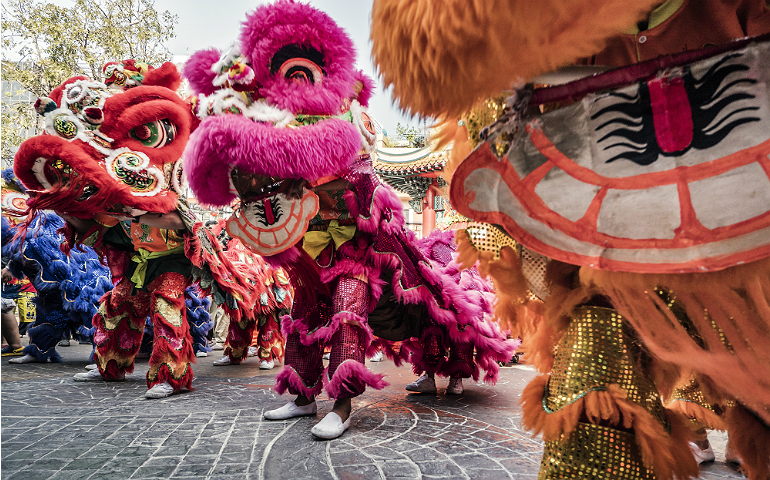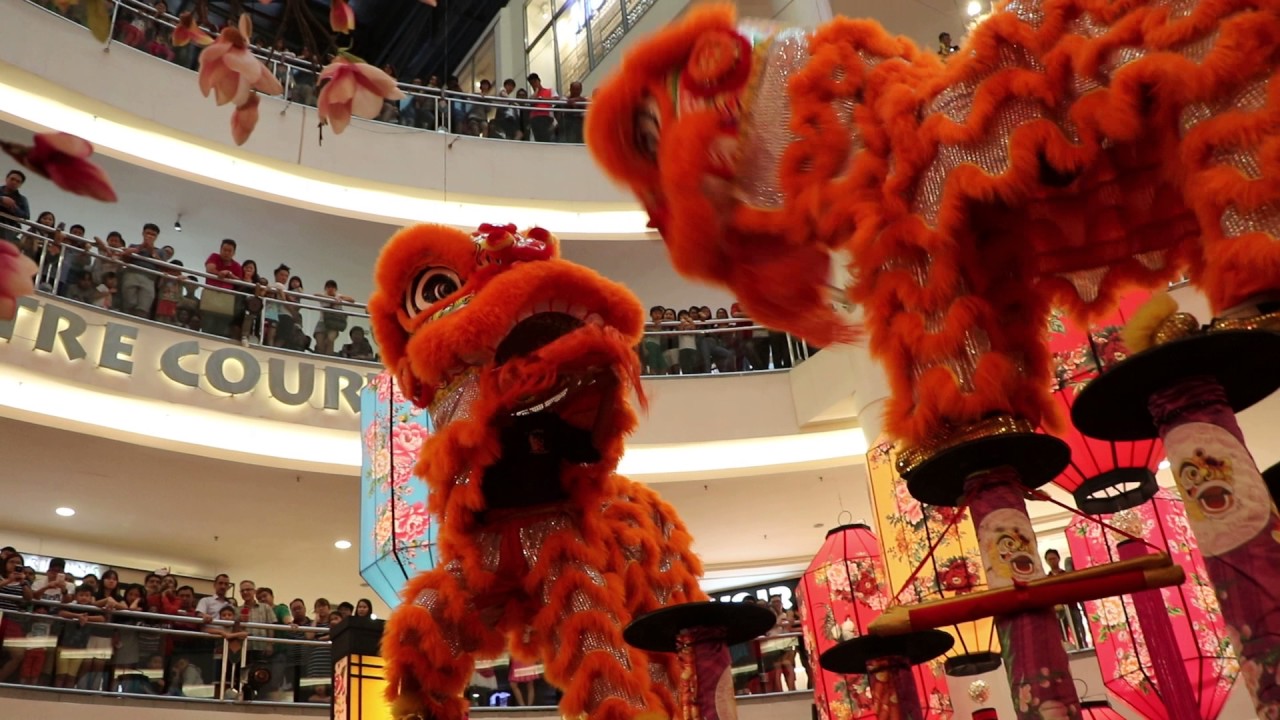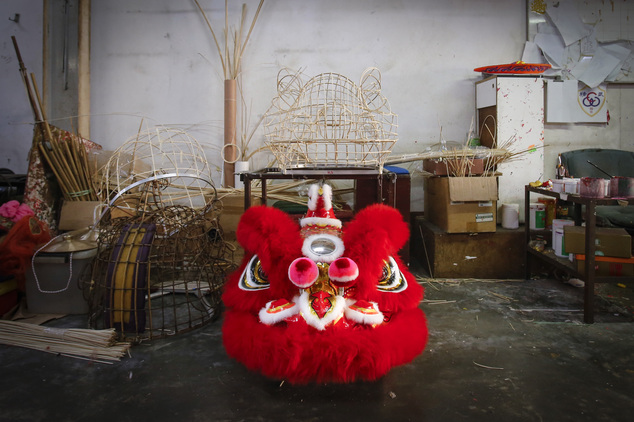It is said that in ancient times, a mythological creature known as Nian terrorised China and devoured its people on the eve of the new year. The only animal that managed to wound this beast was the lion. Thus, in an attempt to frighten the beast, the villagers decided to mimic the lion with lions made of cloth.

In accordance with this legend, the dance is believed to usher good fortune, as well as ward off evil spirits. The lion dance calls for perfect co-ordination, elegance and nerves of steel.

Two dancers are usually needed to give life to a "lion" – one to control the movements of the head, eyes and mouth; the other to act as the body. The first dancer that controls the head determines the movements, while the second must work in tandem with him.

This isn't a simple task as the lion's head, which is brilliantly adorned with feathers, fur and glitter, weighs from 9kg to 15kg, a considerably heavy burden to hold aloft while moving vigorously. The head is usually constructed of papier mache and bamboo, complete with eyes that blink and a mouth that snaps. Therefore, the first dancer must have perfect co-ordination inspite of the burden.

The dancers are usually enticed with gifts, usually ang pow (money in red packets) attached to a vegetable, which are tied to a pole. The pole is then placed at a door or a window. The dancers would then try to get these gifts, making it look as though the lion devours them. Often, the lion dancers are accompanied by two other masked dancers who act as jokers, provoking the lion; the dance is commonly performed to the beat of the tagu (Chinese drum) and the clanging of cymbals.

In Malaysia, troupes of lion dancers travelling from one place to another in trucks are a common sight during the 15-day period of Chinese New Year. They are usually hired to perform at individual homes and business premises such as hotels and shopping complexes during this auspicious period.
.jpg)
However, it is not unusual to see it outside of the new year season for it is also in demand among the Chinese community for ceremonies such as the launch of new business premises or for the welcoming of dignitaries. Lately, the dance has become a form of sport where dancers from all over the world compete to determine the best.
According to www.langkawi-gazette.com.













